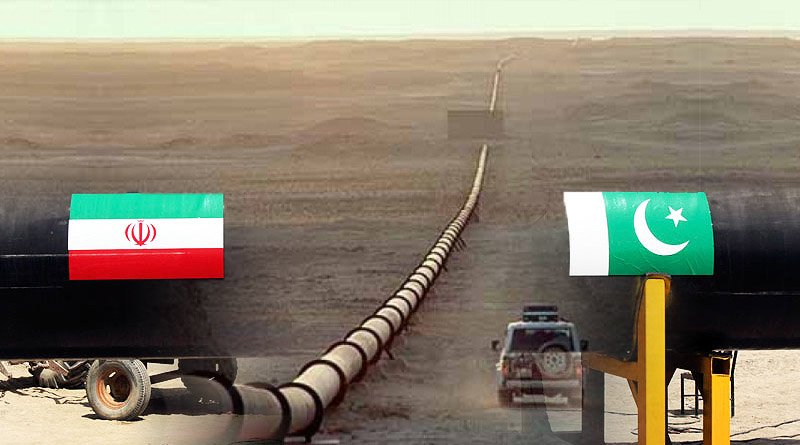Following Iran’s announcement that it may seek arbitration, Pakistan moved quickly to hedge its bets and make decisions that it had previously avoided.

The Iran-Pakistan (IP) gas pipeline project, which had been on hold for more than ten years due to US sanctions on Iran and Pakistan’s unstable economy, has been revived as Pakistan begins diplomatic efforts to revive the long-running energy project and provide energy-deficient Pakistan with a consistent gas supply.
Last month, Iran warned Pakistan that if Islamabad does not complete its portion of the project by March 2024, it will take the matter to an arbitration tribunal and file a damages suit. Iran claims to have lost $18 billion as a result of Islamabad’s failure to complete its portion of the project.
Following Iran’s announcement that it may seek arbitration, Pakistan moved quickly to hedge its bets and make decisions that it had previously avoided.
Ali Raza Bhutta, Pakistan’s petroleum secretary, informed the Public Accounts Committee (PAC) that Islamabad had spoken with US representatives about the petrol project and requested that they either lift sanctions against Iran or reimburse Tehran for the loss it suffered because the pipeline was still not built in Pakistan.
Just hours later, in early March, the Foreign Affairs Committee of the lower house demanded that the administration remove the obstacles in the IP project so that work on its portion of the pipeline could be completed by March 2024 to avoid a $18 billion damage claim.
According to Mohsin Dawar, the committee’s Chairperson, despite the fact that Iran is subject to sanctions, several regional nations have been permitted to conduct trade with Iran. Unfortunately, he continued, Pakistan was unable to obtain such trade authorization with its western neighbour.
He directed officials from the commerce and foreign affairs ministries to pursue aggressively options for obtaining waivers on oil trade with Iran, similar to what India and China had done.
Pakistan sent an official delegation to Iran last month to calm down the situation and convince the Iranian government not to sue Pakistan for damages under the Gas Sales Purchase Agreement (GSPA).
Pakistan was required to construct a 781-kilometer-long pipeline from the Iranian border to the district of Nawabshah in the interior of Sindh by 2014, and the first flow of Iranian gas to Pakistan was planned to start on January 1, 2015.
Iran had already finished its part of the pipeline, which ran from the Pars energy economic zone for more than 1,100 kilometers and then continues through Fars, Kerman, Hormozgan, and Sistan-Baluchistan.
The US has put economic sanctions on Iran for its alleged nuclear weapons program, which has discouraged meaningful Iran-Pakistan cooperation and made Pakistani banks unwilling to finance the project.
In 2013, the US threatened Pakistan with economic sanctions over the IP project, claiming that it had supported international sanctions against Iran’s energy exports due to its nuclear program.
However, Iran’s president, Mahmoud Ahmadinejad, denied the US claim, saying that the gas pipeline had nothing to do with the country’s nuclear program. He also noted that natural gas cannot be used to make atomic bombs.
The IP Gas Pipeline, which is 2,735 kilometers (1,700 miles) long and is often called the “Peace Pipeline,” was first thought of in 1994, when India was also involved in the project. The first plan for the $7.5 billion project said that gas from the South Pars Gas Fields would be sent to India through Balochistan in western Pakistan.
However, there have been several problems that have kept putting off the completion of a natural gas project that Pakistan badly needs because it doesn’t have enough energy. Pakistani authorities reacted negatively to the threat and Asif Ali Zardari, a former president of Pakistan, said that the IP pipeline was more about economic survival.
The three countries were close to reaching an agreement in 2008, but India decided to proceed with the Turkmenistan-Afghanistan-Pakistan-India (TAPI) pipeline. Because of US sanctions and pressure on Iran, it appears that India has decided to withdraw from the IP gas pipeline agreement and seek an alternative that does not involve Iran.
In 2009, a 25-year Gas Sale and Purchase Agreement was negotiated to build a 781-kilometer pipeline from the Iranian border to Nawabshah.
The pipeline was supposed to run 665 kilometres through Pakistan’s Balochistan province and 115 kilometres through Sindh province. The pipeline runs 1,100 kilometres through Iran, from the Pars gasfield to the Pakistani border region of Balochistan.
Once completed, the IP gas pipeline was supposed to provide 750 million cubic feet of gas per day from Iran to Islamabad. According to the deal, gas shipments from Iran would start in 2014. But during the previous nine years, this hypothesis has proven to be a pipe dream and has not materialized.
